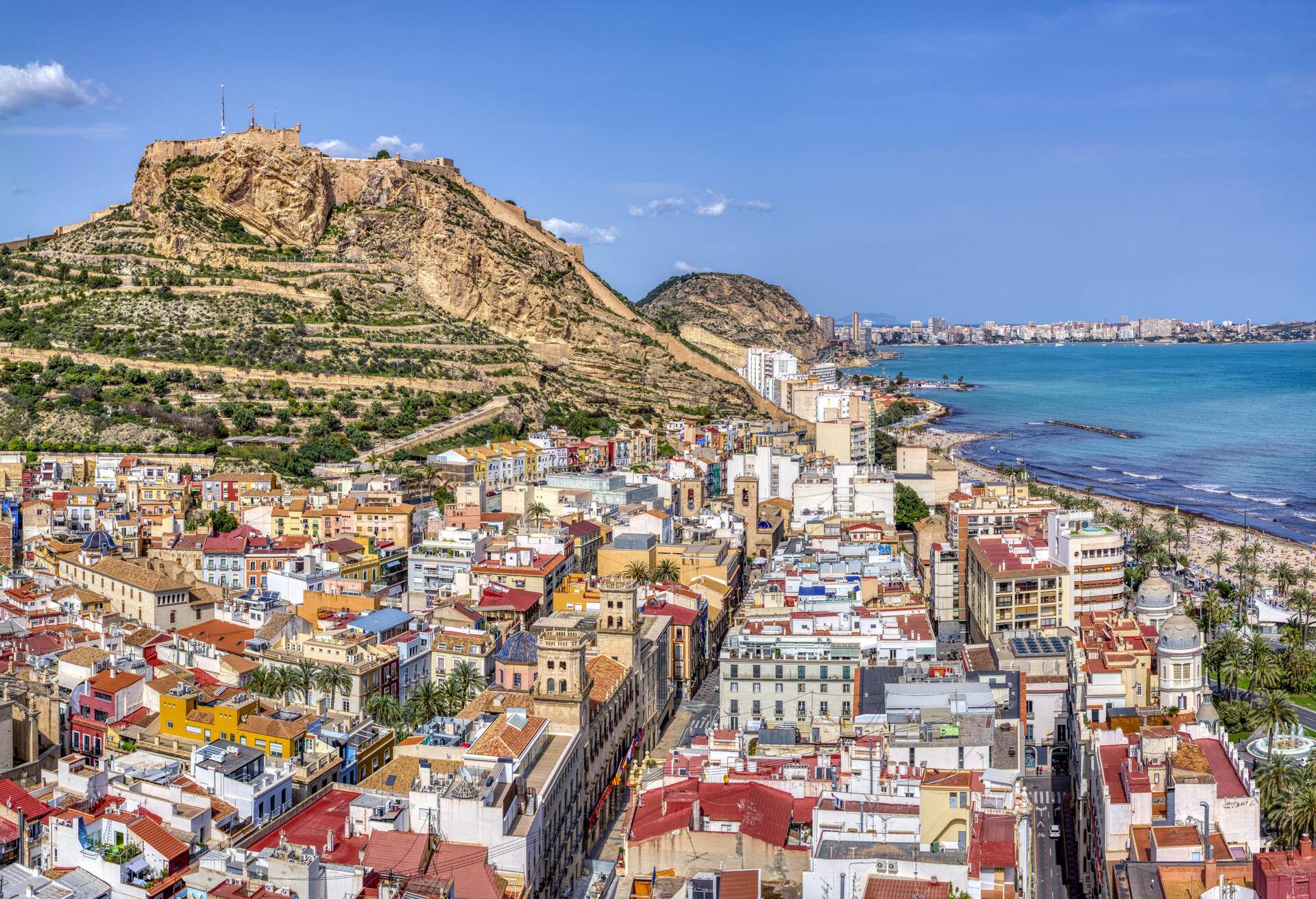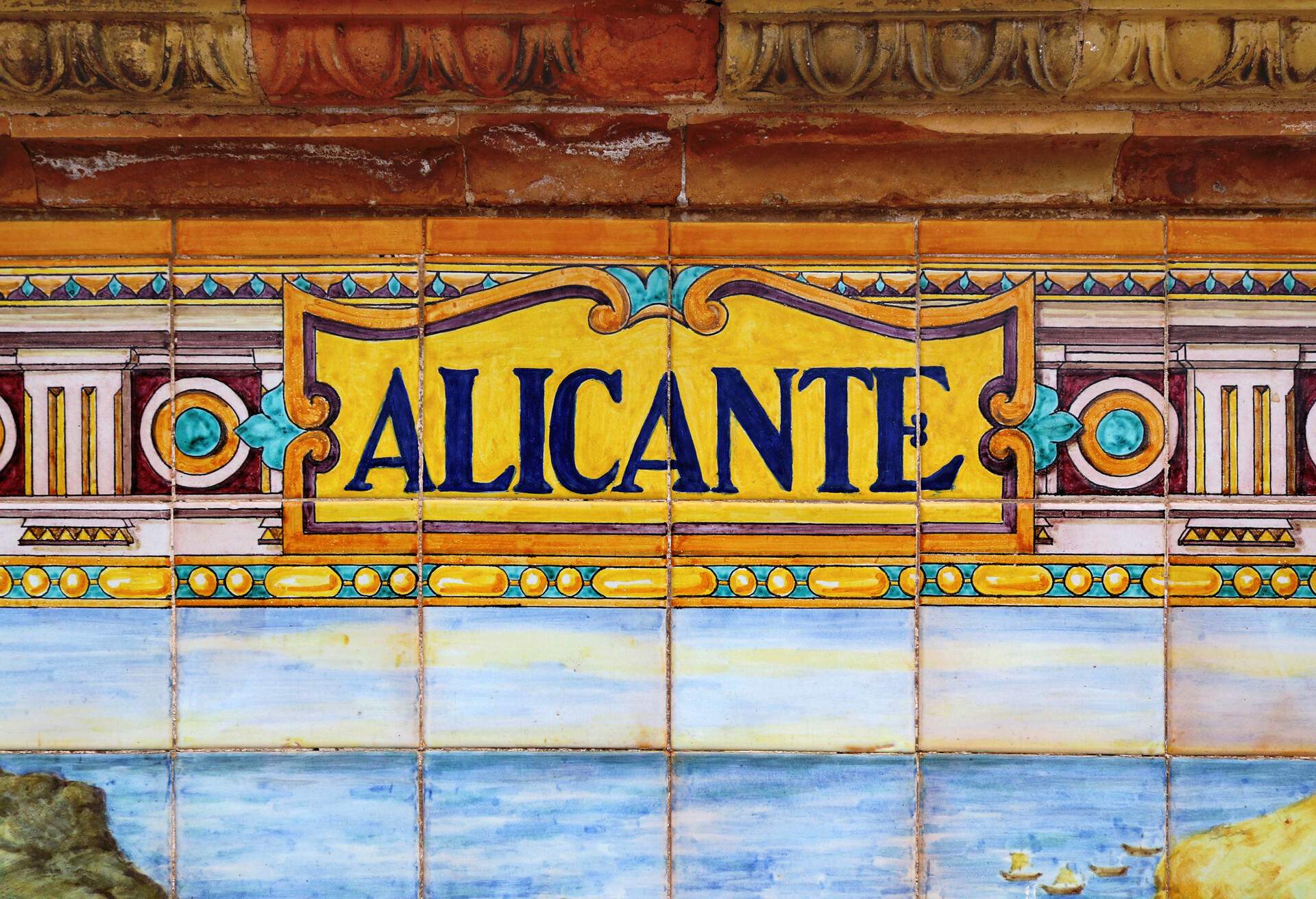Visitors to Alicante too frequently overlook Alicante Old Town. It is – often quite literally – in the shadow of the magnificent Santa Barbara Castle, perched high above the city. But for people visiting Spain with an interest in history or who love visiting local churches, Alicante’s Old Town district has plenty to offer. There are beautiful cathedrals, picturesque streets and fascinating museums, plus some truly unique restaurants and bars.
Important history of Alicante Old Town
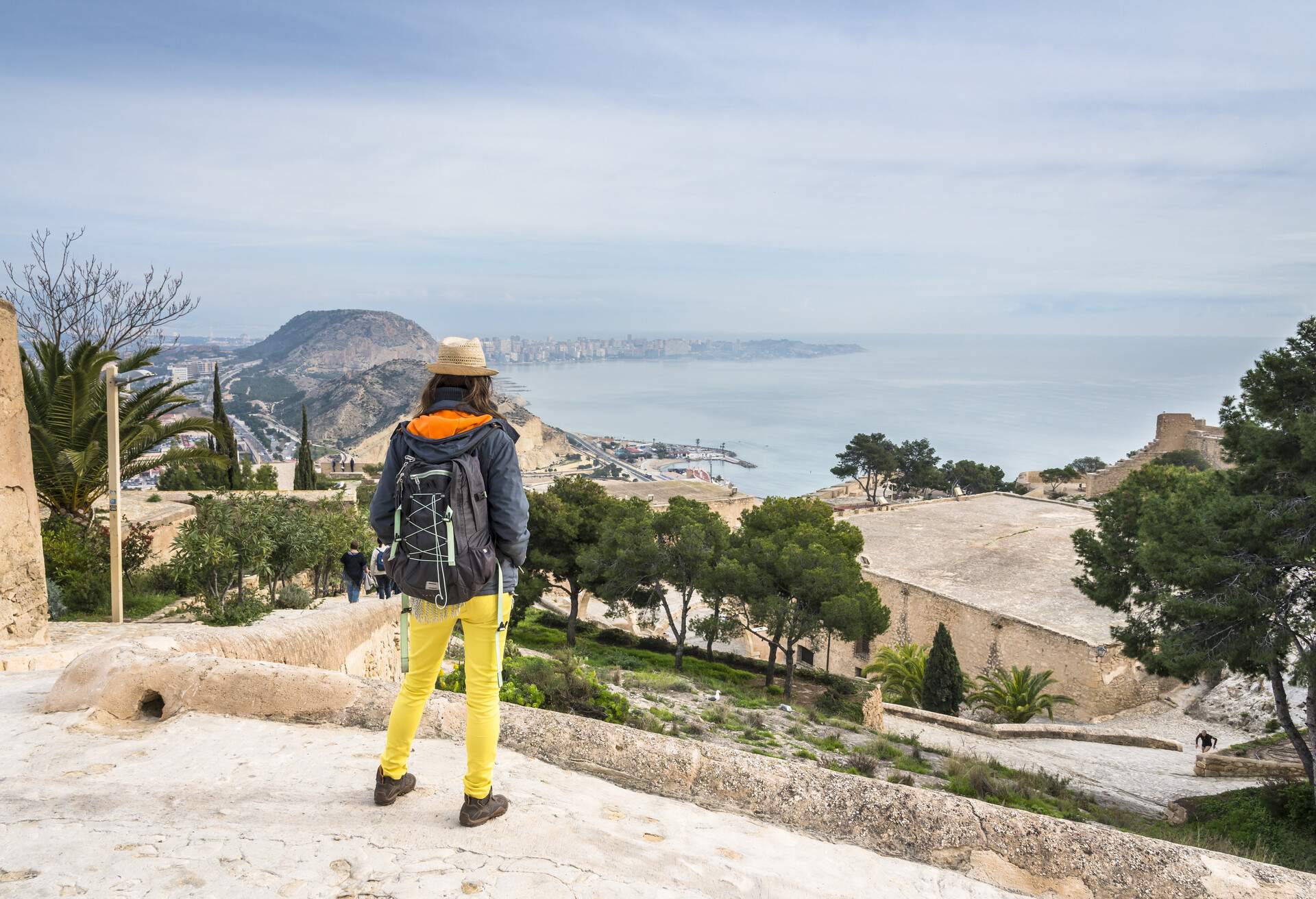
When you visit Alicante’s Old Town district, what you will find is a story of destruction and rebirth. In 1691, the French Armada bombed the city for seven days straight. The historic quarter is located close to the coastline, so it took much of the damage. Many buildings remaining in Old Town will have been built after this, though they may have their roots in the centuries beforehand.
Town Hall
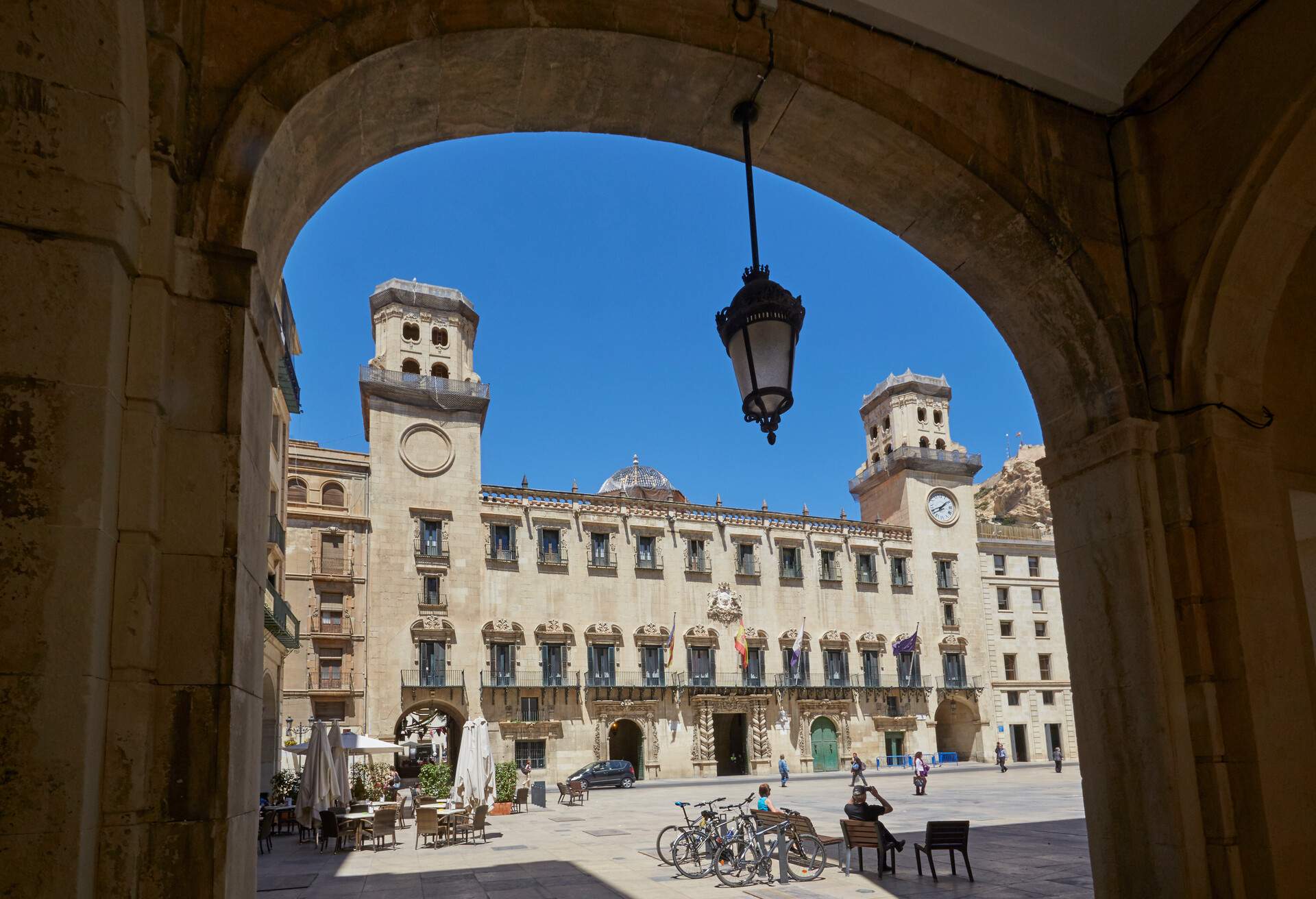
Alicante Town Hall is an impressive Baroque building that dates back to the 18th century. The site had been used as a town hall since the 15th century, but it was destroyed during the bombardment of 1691. Solomonic columns and imposing towers mark the entrance. Head inside the Town Hall for a glimpse into the history of the town, including the Isabelline-style Blue Room on the top floor. You can find the Town Hall in a stunning town square with lots of shops and restaurants where you can relax and get away from the heat.
Calle Labradores
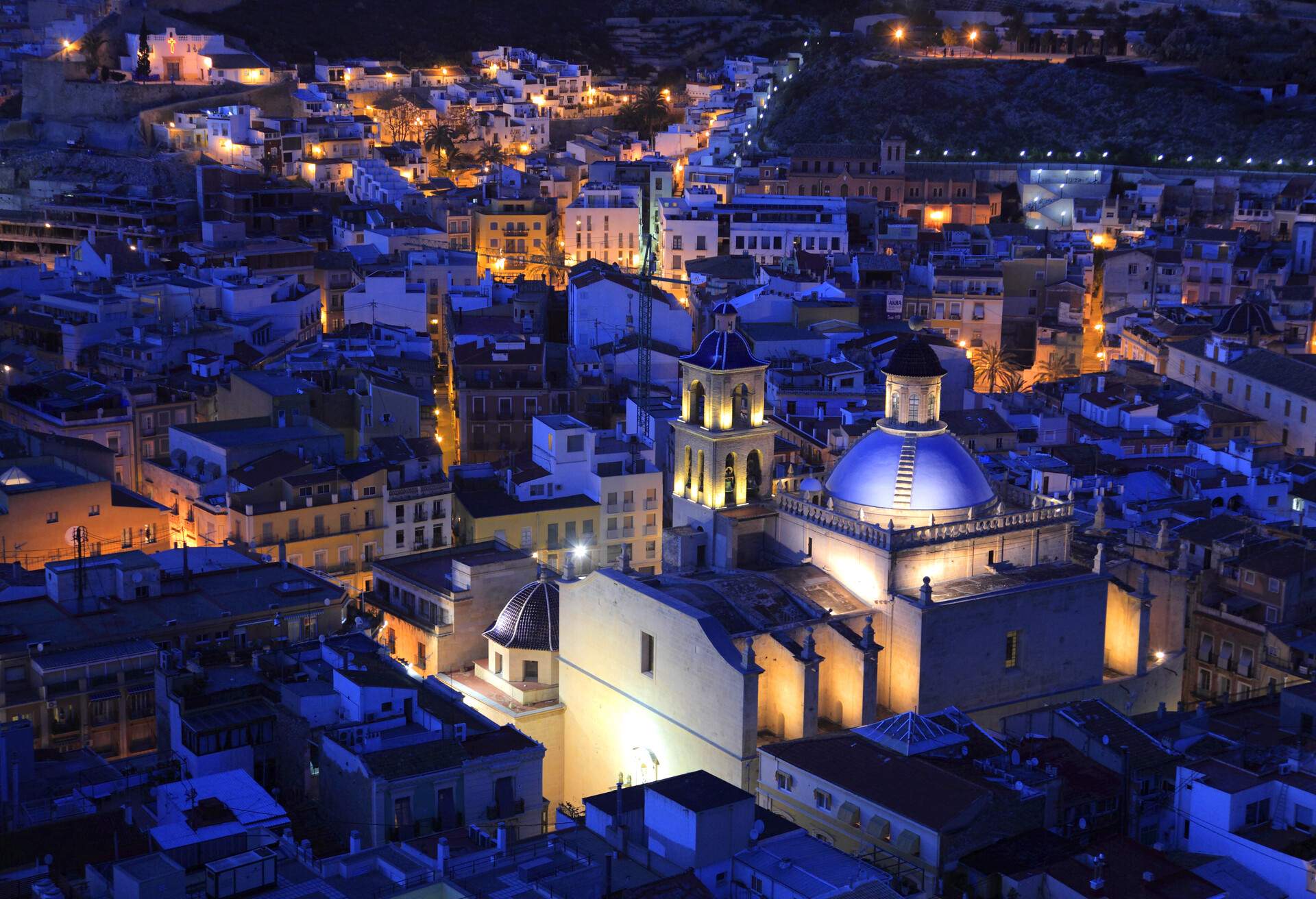
Calle Labradores is a street with a lot of historical weight behind it. It was once prime real estate for Alicante’s nobility, in particular during the reign of Alfonso X, King of Castile in the 13th century. Today, although not much survives of the original buildings, it is a beautiful area to walk down, particularly early in the morning. At nighttime, this is where the city bursts to life, with restaurants, bars and outdoor seating spilling out onto the street.
Concatedral de San Nicolas
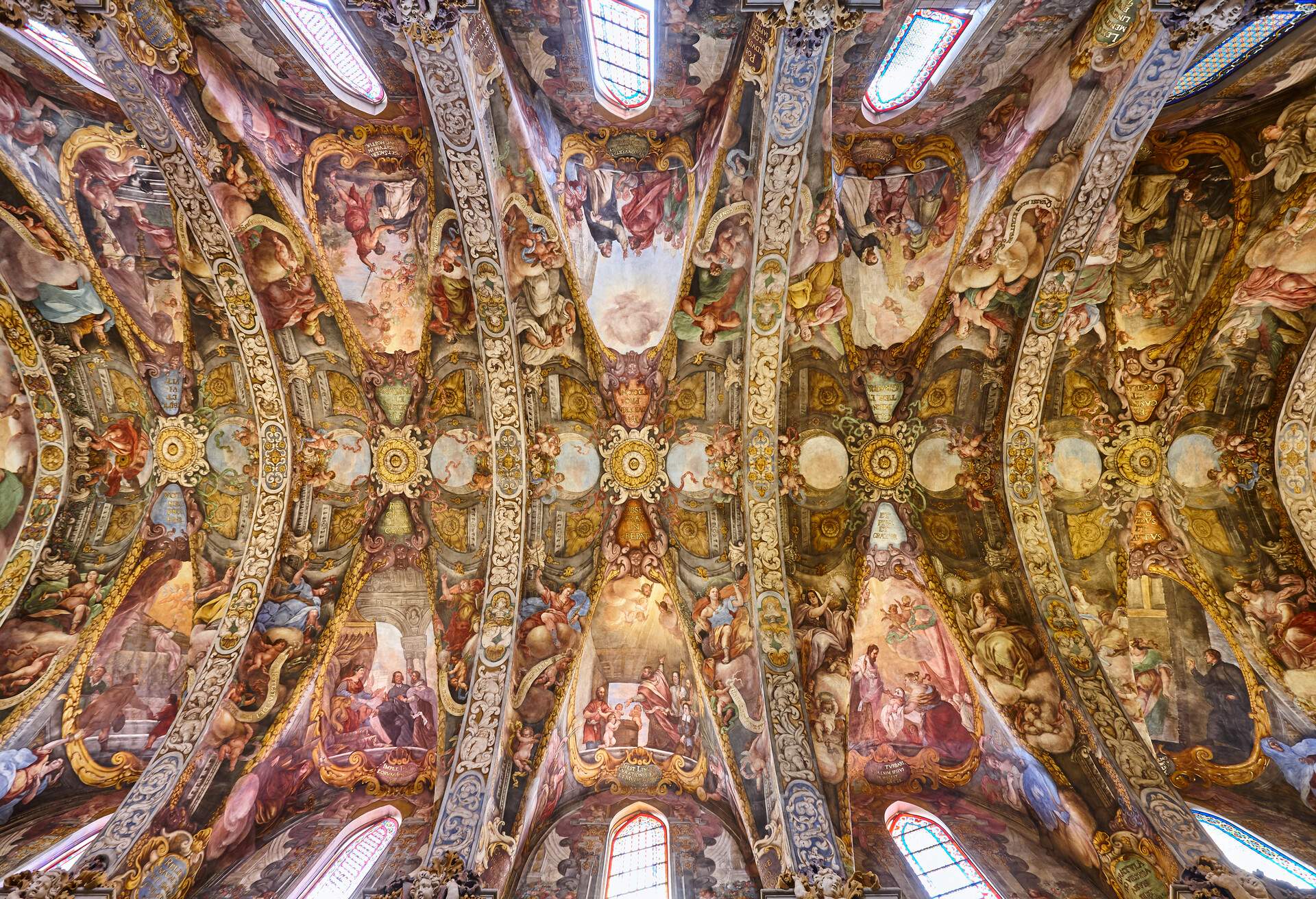
The co-cathedral of Saint Nicholas of Bari is a Roman Catholic church that was constructed over a mosque in the 16th and 17th centuries. It is one of the few major buildings in the district that was not severely damaged during the 1691 attacks. Its most noteworthy feature is the beautiful pale-blue dome that tops its roof. You will find stunning examples of Spanish Baroque architecture at the chapel of Holy Communion. Its exterior showcases the Doric architectural order on the east side and the Ionic on the west. Inside the cloister, go into the garden of the cathedral and experience the way the sounds of the city just fade away and leave you in quiet serenity.
Basilica de Santa Maria de Alicante
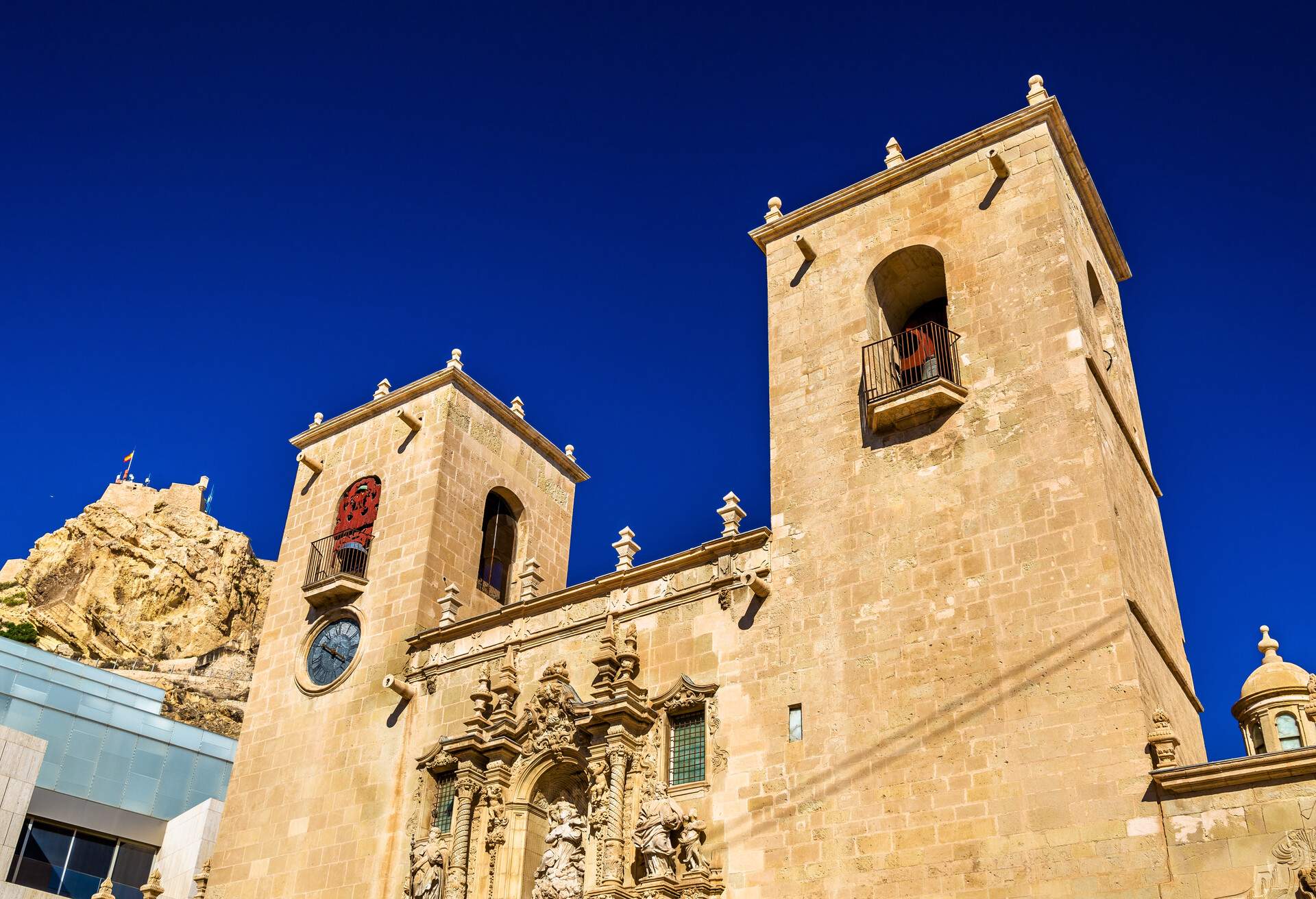
The Basilica of Saint Mary of Alicante is the oldest active church in the city. Like the co-cathedral of Saint Nicholas, it was built over the remains of a mosque, and it was constructed between the 14th and 16th centuries. It is a beautiful example of Valencian Gothic architecture with magnificent Baroque doors covered in sculptures by Juan Bautista Borja, a famous Spanish sculptor. The interior houses a gold altar, constructed in the 18th century, Rocco style, and a beautiful statue of Mary, made by 18th-century sculptor Jose Esteve Bonnet.
Nativity Scene Museum

If you’re visiting Spain in winter, try to get to Alicante around Christmas. The country as a whole is well known for its beautiful and intricate nativity scenes. The Nativity Scene Museum in Alicante is usually open year-round, so it’s the perfect way to experience Spain’s love of the tradition if you’re visiting out of season. It showcases a number of nativity scenes, and visitors can get up close and see the remarkable detail in the figures. It’s something of a hidden gem in Alicante and entry is free, so you can visit this small but packed museum multiple times.
Museo de Aguas de Alicante

This is a fascinating museum that allows visitors to walk through the tunnels of the wells of Garrigos. Originally constructed in the 16th century to collect rainwater that would run through the city via the aqueduct, in the 19th century, the wells were excavated and a cistern system was created. As you walk through the museum, you’ll get a look at how the systems made to catch water changed over the years and how the different groups that lived in Alicante used them. This is a great museum to visit with any curious kids. The interactive section on the second floor explains the water cycle and modern-day water systems.
Gravina Museum of Fine Arts (MUBAG)

Situated on the edge of Alicante’s historic quarter, the Gravina Museum of Fine Arts is located in the stunning Palacio del Conde de Lumiares. It is also quite close to the Contemporary Art Museum. The building is a work of art itself, built between 1748 and 1808. It’s a fantastic all-rounder museum, with artworks from the 16th to the 20th century. There are often unique temporary exhibitions to complement their permanent collection. Like many Alicante museums, the Gravina Museum of Fine Arts is free to enter.
Contemporary Art Museum (MACA)

In the Plaza de Santa Maria, you’ll find the Contemporary Art Museum, which hosts both modern (20th century) and contemporary art. Among its collection are works by legendary modern artists, such as Dali and Picasso. The building it’s housed in is a work of art too. The Casa de la Asegurada is the oldest surviving civil building in the city and is one of Alicante’s most notable examples of Baroque architecture. The building has been renovated and expanded over the years, making it a unique piece of modern art in itself.
Santa Cruz Quarter
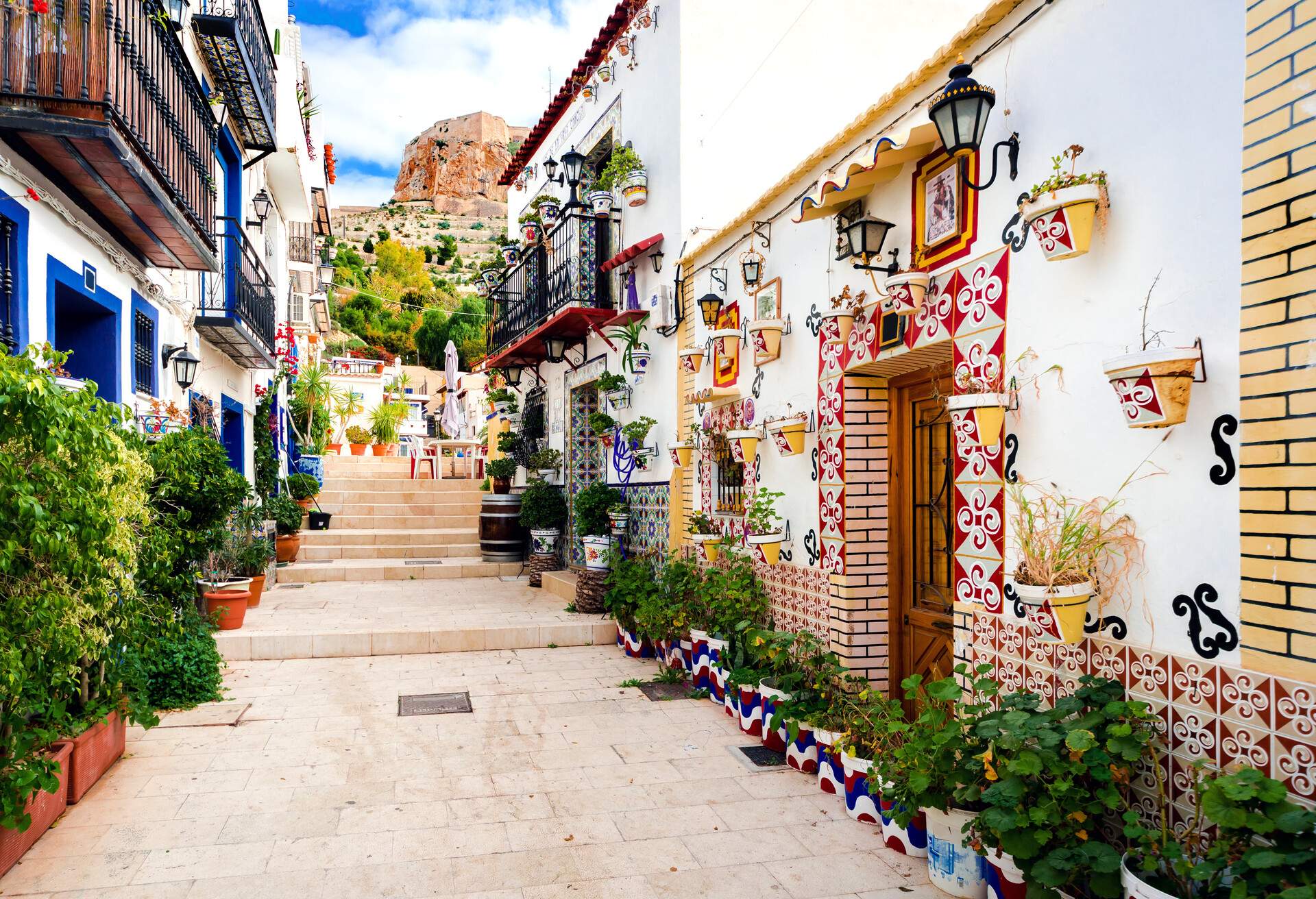
The Santa Cruz Quarter is the oldest part of Old Town. It’s known for its bright colours, with lovely blue and white houses, pretty mosaic flooring and lots of pots and hanging plants dotted along every street. It is fairly relaxed and laid back with a lively feel. There are plenty of bars, cafes and restaurants in this area. You’ll be going up and down lots of steps as you explore, so take advantage of the opportunity to sit down and relax with a coffee or a cocktail.
Ermita de la Santa Cruz
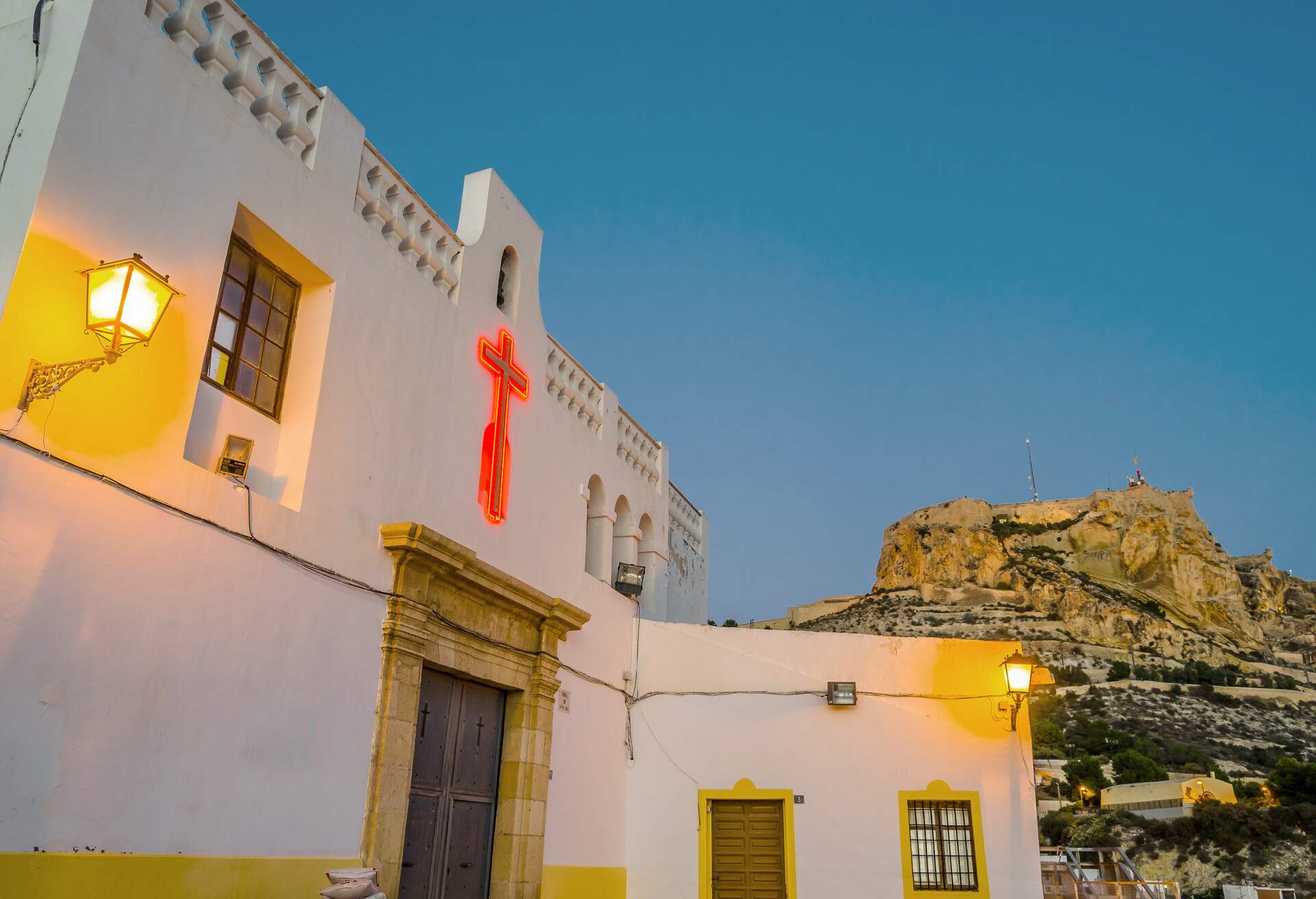
Make sure you bring your camera when you visit the Ermita de la Santa Cruz. This small church in the Santa Cruz district is positioned at one of the highest points in Old Town. Head up here and you’ll get incredible views of the city below. The church itself is its own photo opportunity, with its white walls set against the bright blue Alicante sky. Around Easter, the Procesion de la Hermandad de la Santa Cruz begins here and the streets will fill up with locals and tourists.
Alicante Old Town nightlife

When the evening rolls around, you’ll find some of Alicante’s best nightlife in Old Town. Calle Labradores and the streets surrounding it are particular hotspots. Head into a pub to grab a hearty meal and catch the football match. Or, get ready for a night out at the club with DJs playing until the early hours of the morning. You’ll encounter promoters encouraging you into their restaurant and offering free drinks. Most of the time, there’ll be no pressure for you to stay and order more, but they tend to be fairly inexpensive.
Where to go at night in Alicante Old Town

You’ll be spoilt for choice when you visit Old Town in the evenings, but there are a few truly excellent locations. Restaurant l’Atelier is a cosy, contemporary restaurant serving up delicious Mediterranean cuisine. La Taberna del Gourmet is a rustic Spanish tavern serving grilled meats, tapas and Spanish wines. Due to its proximity to the ocean, most restaurants in Alicante will focus on fresh seafood. For post-dinner drinks, head to OVER Club for some excellent music and plenty of room on the dancefloor. For a quieter vibe, relax at Gatsby Cocktail Club.
Where to stay in Alicante’s Old Town
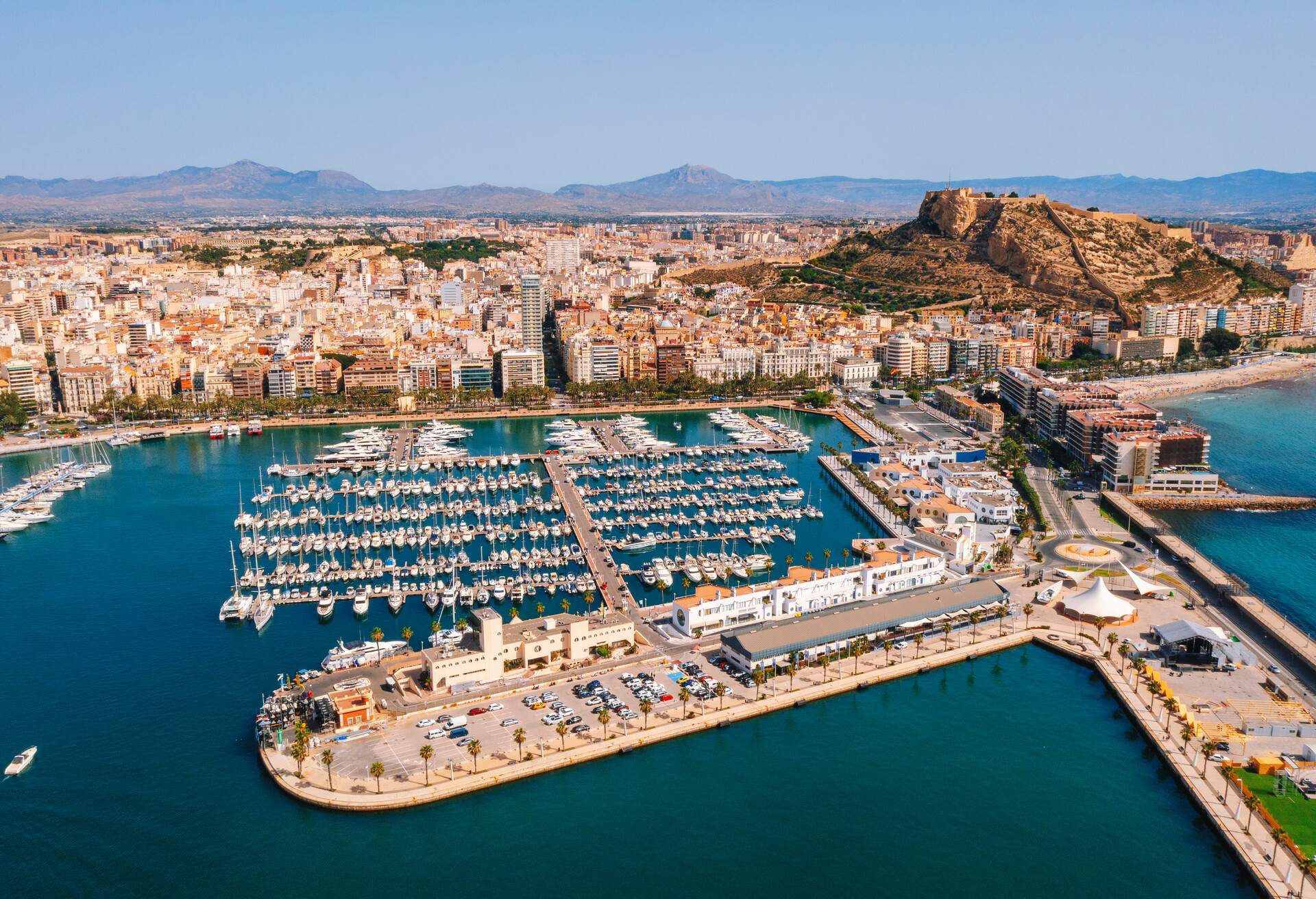
El Pont is a gorgeous hotel very close to the Contemporary Art Museum. It has a pool, and every unit has a balcony that lets you look out over Old Town. If you’d prefer a self-catering option in the area, Uniq Flats is a great option close to the Basilica de Santa Maria. Whether you choose to stay in Alicante Old Town or anywhere else in the city, there are plenty of Alicante hotels that will suit your needs.
FAQs: Alicante Old Town
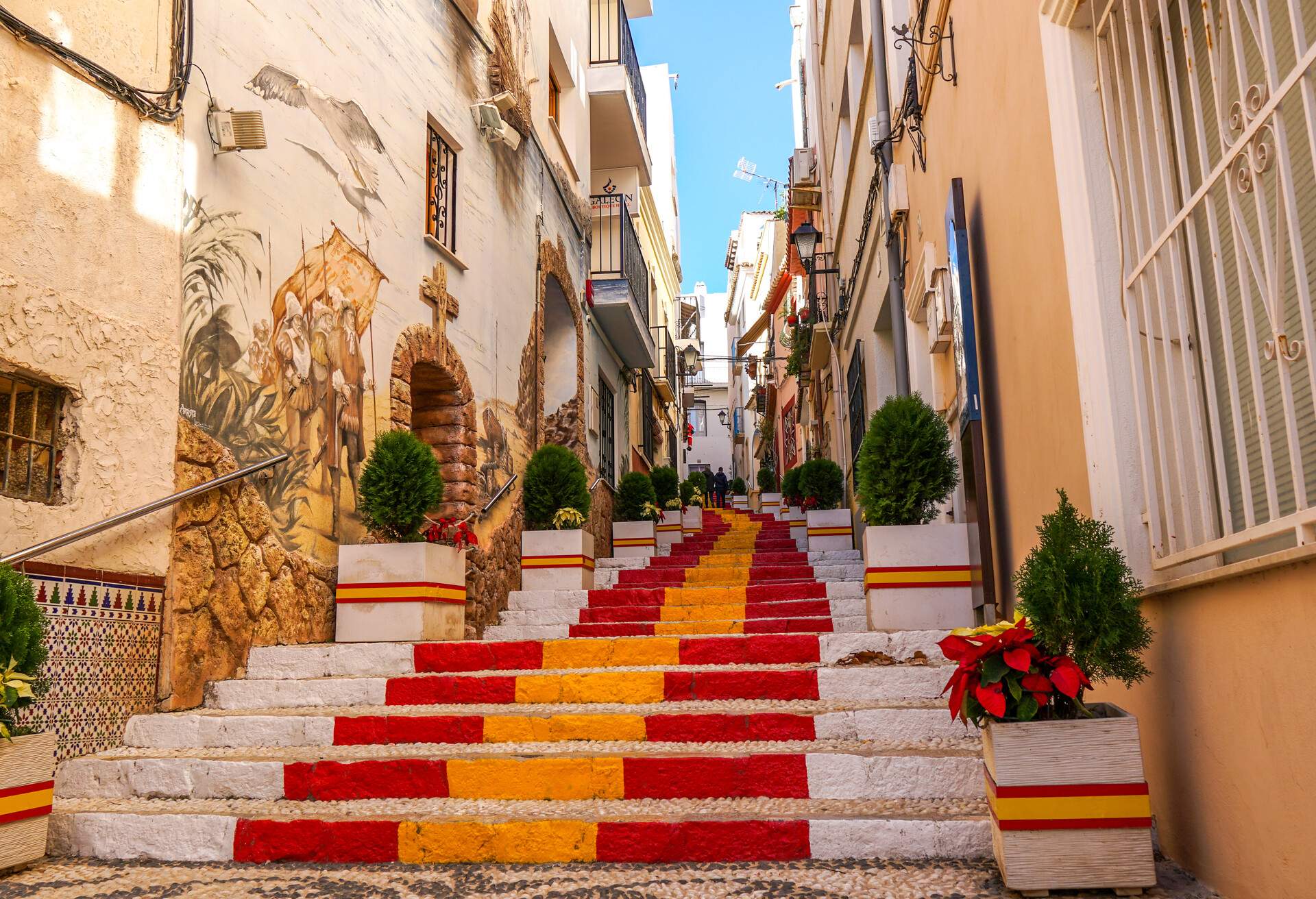
All the answers to your burning questions about Alicante Old Town.
What is Old Town in Alicante called?
Old Town in Alicante is called ‘El Barrio’ (‘The Neighbourhood’) by the locals. This mostly refers to the most accessible part of Old Town, while the oldest part is called the Santa Cruz Quarter.
Does Alicante Old Town have a beach?
Playa San Juan Beach is a popular, bustling beach nearby lined with bright, colourful houses.
How far is Alicante’s Old Town from the beach?
Playa San Juan is around 8 km (5 miles) from Alicante Old Town. You can travel between the two spots on the Number 3 tram in around 20 min.
Is Alicante worth visiting?
Alicante is absolutely worth visiting. Many people visit just because of the beautiful beaches and wonderful atmosphere. But there are also many fascinating museums, sights and experiences that make a trip to Alicante well worth your while.
